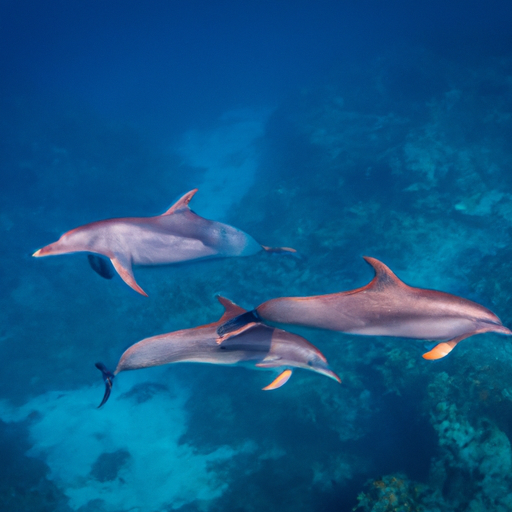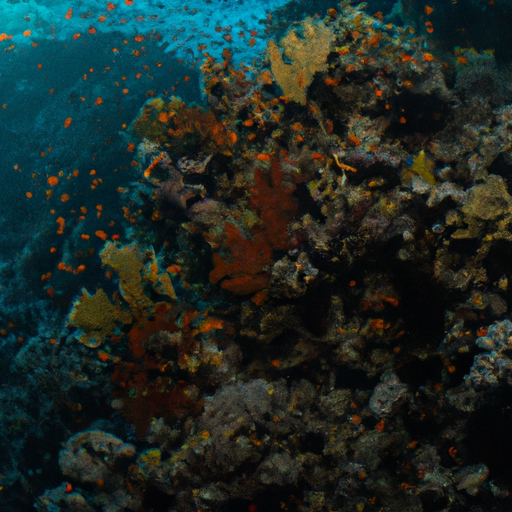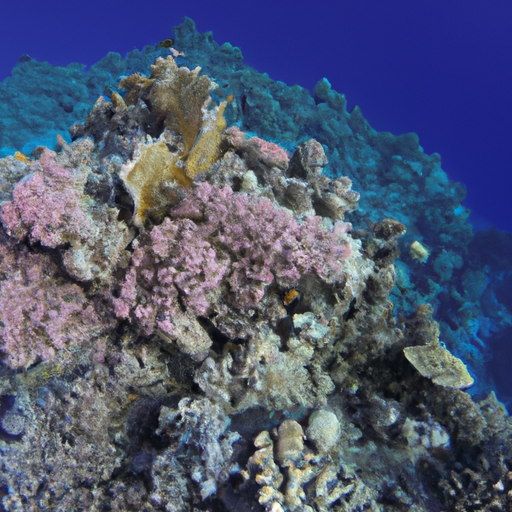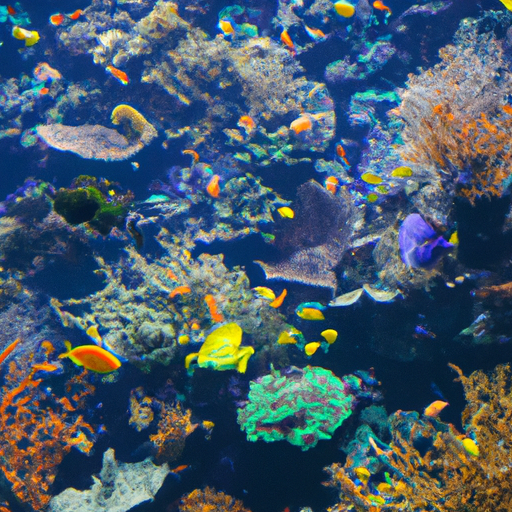
Conservation Efforts to Protect Endangered Marine Species: A Review of Success Stories
Conservation efforts to protect endangered marine species have been crucial in preventing their extinction and restoring their populations. These efforts have resulted in various success stories, but they also come with their fair share of challenges.
One of the notable success stories in marine species conservation is the recovery of the humpback whale population. These majestic creatures were once hunted to the brink of extinction due to commercial whaling. However, through international collaborations and the establishment of protected areas, the humpback whale population has rebounded in many regions. Their numbers have significantly increased, and they have been removed from the endangered species list.
Another success story involves the implementation of fishing regulations to protect vulnerable species, such as the Atlantic bluefin tuna. Overfishing and illegal fishing practices posed significant threats to their population. However, strict fishing quotas, monitoring programs, and improved enforcement have contributed to the recovery of the Atlantic bluefin tuna population in recent years.
Conservation efforts have also been successful in protecting various marine turtle species. The establishment of protected nesting beaches, implementing regulations against illegal egg harvesting, and reducing fishing bycatch have helped increase the survival rates of sea turtle hatchlings. As a result, populations of endangered species like the hawksbill turtle and loggerhead turtle have shown signs of recovery.
Despite these success stories, there are ongoing challenges in marine species conservation. Climate change poses a significant threat to marine ecosystems, affecting both the habitats and food sources of many endangered species. Rising sea temperatures, ocean acidification, and changing currents can disrupt key reproductive and feeding behaviors, making it difficult for species to adapt. Additionally, habitat destruction and pollution continue to be major concerns for marine species, particularly those dependent on coral reefs and coastal areas.
The conservation efforts to protect endangered marine species require long-term commitment and international cooperation. By addressing these challenges and implementing sustainable practices, it is possible to ensure the survival and recovery of these magnificent creatures for generations to come.
It will include case studies, projects, and initiatives that have yielded positive results.
Conservation efforts to protect endangered marine species have become increasingly important in recent years. With the growing threats of climate change, pollution, overfishing, and habitat destruction, many species are facing the risk of extinction. However, there have been several success stories and initiatives that have demonstrated the positive impact of conservation efforts.
One such success story is the conservation of sea turtles. These ancient creatures have been facing numerous challenges, including the destruction of their nesting habitats and accidental capture in fishing nets. However, through the implementation of conservation measures such as protected nesting beaches, stricter fishing regulations, and education programs, some sea turtle populations have been able to recover. For example, in the Caribbean, efforts to protect nesting grounds and reduce bycatch have resulted in an increase in the number of nesting sea turtles, showing that targeted conservation measures can make a significant difference.
Another successful conservation initiative focuses on endangered coral reefs. Coral reefs are not only home to a vast array of marine species but also act as crucial ecosystems that protect coastlines from erosion and provide livelihoods for millions of people. However, coral reefs are highly vulnerable to rising sea temperatures and pollution. Through the establishment of marine protected areas, coral gardening projects, and efforts to reduce pollution, some coral reefs have shown signs of recovery. For instance, the Great Barrier Reef in Australia has seen positive outcomes from the implementation of sustainable fishing practices and the reduction of nutrient runoff.
Despite these success stories, conservation efforts still face numerous challenges. In many cases, limited funding, lack of political will, and the complexity of implementing conservation measures pose significant obstacles. Additionally, the pace of climate change and its effects on marine ecosystems continue to be a pressing concern. It is crucial to build on the successes and learn from the challenges in order to develop more effective conservation strategies.
In conclusion, conservation efforts to protect endangered marine species have yielded positive results in various case studies and initiatives. The recovery of sea turtle populations and the restoration of coral reefs are just a few examples of the outcomes achieved through targeted conservation measures. However, the challenges faced by conservationists underline the need for continued efforts and greater support to ensure the long-term survival of marine species and ecosystems.
The Challenges in Conservation: Obstacles Faced in Protecting Endangered Marine Species
Conservation efforts to protect endangered marine species have seen both success stories and challenges. While strides have been made in safeguarding these precious creatures, there are still numerous obstacles that need to be overcome.
Success stories in marine conservation efforts include the recovery of the humpback whale population. Through international cooperation, the ban on commercial whaling and the establishment of protected areas have allowed humpback whale numbers to rebound. Their inspiring recovery showcases the potential for effective conservation measures.
Another success story lies in the protection of coral reefs. These fragile ecosystems are home to a diverse array of marine species, many of which are endangered. Efforts to establish marine protected areas, educate communities about sustainable fishing practices, and reduce pollution have contributed to the preservation of coral reefs globally.
However, despite these success stories, there are significant challenges that impede conservation efforts. One major obstacle is the lack of funding and resources. Conservation initiatives require financial support to carry out research, implement protective measures, and enforce regulations. Limited funding often means that critical projects cannot be adequately pursued, leaving endangered marine species vulnerable to further decline.
Another challenge is illegal fishing, which continues to threaten endangered marine species. Overfishing and destructive fishing practices such as bottom trawling lead to habitat destruction, bycatch, and depletion of fish populations. Addressing illegal fishing requires improved surveillance, enforcement, and collaboration between nations to combat this issue effectively.
Climate change poses yet another challenge to conserving endangered marine species. Rising sea temperatures, ocean acidification, and coral bleaching have devastating effects on marine ecosystems. These changes disrupt the delicate balance of marine life and disproportionately impact already endangered species. Effective strategies to mitigate climate change and its effects on the oceans are crucial to protect these vulnerable species.
In conclusion, while there have been notable successes in conservation efforts for endangered marine species, there are still significant challenges to address. Funding, illegal fishing, and climate change are just a few of the obstacles that need to be tackled to ensure the long-term survival of these species. With increased global cooperation, resource allocation, and innovative solutions, it is possible to overcome these challenges and protect our precious marine biodiversity.
Topics may include habitat destruction, pollution, climate change, and human activities such as overfishing.
Conservation efforts to protect endangered marine species are essential for the long-term survival of these remarkable creatures. With topics such as habitat destruction, pollution, climate change, and overfishing posing significant threats to their existence, concerted actions are necessary to mitigate these challenges.
Fortunately, there have been numerous success stories in the realm of marine species conservation. One such notable achievement is the recovery of the humpback whale (Megaptera novaeangliae) population. Once heavily hunted for their blubber and oil, humpback whales were on the brink of extinction. However, through international cooperation and the implementation of protective measures, their numbers have rebounded significantly in recent decades. Strict regulations on hunting, the establishment of marine protected areas, and efforts to reduce entanglement in fishing gear have all contributed to this success.
Another success story involves the Kemp’s ridley sea turtle (Lepidochelys kempii), the most endangered sea turtle species. Due to decades of intense poaching and the incidental capture in fishing gear, their population had drastically declined. However, through conservation initiatives like nest protection programs, the enforcement of fishing regulations, and public education campaigns, their numbers have started to show signs of recovery. While still facing significant challenges, the positive trajectory of the Kemp’s ridley sea turtle provides hope for the conservation of other endangered marine species.
While these success stories are encouraging, conservation efforts for endangered marine species also encounter various challenges. One major obstacle is the vastness and connectivity of marine ecosystems. Unlike terrestrial environments, protecting marine species requires international cooperation and the implementation of transboundary conservation strategies. This can be a complex task, as it involves coordinating efforts across different jurisdictions, addressing differing priorities and regulations, and establishing effective monitoring systems.
Furthermore, the impacts of climate change pose additional challenges for marine species conservation. Rising ocean temperatures, ocean acidification, and sea-level rise disrupt ecosystems, affecting species distribution, reproduction, and their overall survival. To address these challenges, adaptive management strategies that consider the changing climatic conditions and incorporate scientific research are crucial.
In conclusion, conservation efforts to protect endangered marine species have yielded positive outcomes in some instances. However, the challenges posed by habitat destruction, pollution, climate change, and human activities such as overfishing require continued dedication and innovation in conservation strategies. By understanding the successes and challenges, and by fostering international collaboration, it is possible to ensure the preservation of these magnificent creatures for future generations.
Promising Steps Forward: Innovations and Strategies to Save Endangered Marine Species
Conservation efforts to protect endangered marine species have made significant progress in recent years. Thanks to innovative strategies and collaborative initiatives, there have been numerous success stories in safeguarding our oceans’ most vulnerable creatures. However, these efforts also come with their fair share of challenges.
One notable success story is the recovery of the humpback whale population. Decades of international cooperation and strict conservation measures have led to a remarkable rebound in their numbers. The ban on commercial whaling, the establishment of protected marine areas, and the implementation of monitoring and research programs have been instrumental in this achievement. Today, humpback whales are no longer classified as endangered, exemplifying the positive outcomes that can be achieved through dedicated conservation efforts.
Another success story lies in the conservation of sea turtles. Through the establishment of protected nesting beaches, efforts to reduce accidental bycatch in fishing nets, and campaigns to raise public awareness, some sea turtle populations have seen significant recovery. For instance, the efforts to protect the nesting sites of loggerhead turtles in Florida have resulted in a surge in their numbers. Despite facing ongoing threats such as habitat degradation and pollution, these conservation strategies offer hope for the long-term survival of sea turtles.
However, challenges remain in the conservation of endangered marine species. One major obstacle is illegal wildlife trade, which fuels the demand for products derived from these species, such as shark fins and sea turtle shells. Despite global efforts to combat this illegal trade, it persists due to its high profitability. Strengthening law enforcement efforts and raising awareness about the consequences of wildlife trafficking are crucial to address this issue effectively.
Habitat loss and degradation also pose significant challenges to marine species conservation. As coastal development and pollution increase, critical habitats like coral reefs and seagrass beds are being destroyed. These important ecosystems serve as nurseries and feeding grounds for numerous species, and their loss can have devastating consequences. Stricter regulations on coastal development and sustainable fishing practices are essential to protect these habitats and the species that depend on them.
Furthermore, climate change poses an existential threat to marine species. Rising ocean temperatures, ocean acidification, and sea-level rise directly impact the health and survival of many marine organisms. To address this challenge, conservation efforts must tackle both the root causes of climate change and the development of climate-resilient strategies to protect vulnerable marine species.
Conservation efforts to protect endangered marine species have yielded encouraging results, but the journey is far from over. Continued collaboration between governments, scientists, NGOs, and local communities is necessary to overcome the challenges and ensure the long-term survival of these magnificent creatures. Through innovative strategies, effective regulation, and public engagement, we can continue making promising steps forward in marine species conservation.
This can include advancements in technology, international collaborations, and community-based conservation efforts.
Conservation efforts to protect endangered marine species have become increasingly important in recent years. With the growing threat to marine ecosystems worldwide, organizations and communities have been working tirelessly to implement successful strategies for preservation and recovery. This has led to both success stories and challenges in the realm of marine species conservation.
One notable success story is the recovery of the humpback whale population. These majestic creatures were once on the brink of extinction due to widespread hunting and habitat degradation. However, through international collaborations and the establishment of protected areas, their numbers have significantly increased. The implementation of regulations against hunting and shipping collisions, as well as the restoration of their natural habitats, have contributed to the humpback whale’s successful recovery.
Another success story is the conservation efforts made to protect the leatherback sea turtle. These ancient creatures have faced numerous threats, including poaching, entanglement in fishing gear, and habitat destruction. However, through community-based conservation efforts, such as the establishment of nesting beaches and the implementation of fishing gear modifications, the population of leatherback sea turtles has shown signs of recovery. These local initiatives, combined with international collaborations and stricter regulations, have played a crucial role in safeguarding this endangered species.
Despite these success stories, many challenges still exist in marine species conservation. One major challenge is the issue of bycatch, which refers to the unintentional capture of non-target species in fishing gear. This is a significant threat to marine species, including dolphins, turtles, and seabirds. Efforts to reduce bycatch through the use of alternative fishing methods and the implementation of regulations have shown promise but require further attention and research.
Climate change is another major challenge impacting endangered marine species. Rising sea temperatures and ocean acidification significantly affect the habitats and food sources of marine species. Coral reefs, for example, are highly vulnerable to climate change, and their decline has severe consequences for the ecosystem as a whole. To address this challenge, conservation efforts must go hand in hand with climate change mitigation strategies, such as reducing greenhouse gas emissions and promoting sustainable practices.
In conclusion, conservation efforts to protect endangered marine species have shown both success stories and challenges. International collaborations, community-based efforts, and advancements in technology have played a crucial role in the preservation of marine species. However, bycatch and the impacts of climate change remain significant obstacles that require concerted efforts from various stakeholders. To ensure the long-term survival of endangered marine species, it is essential to continue supporting and implementing effective conservation strategies.
The Future Outlook: Importance of Continued Conservation Efforts
Conservation efforts to protect endangered marine species play a crucial role in ensuring the future health and sustainability of our oceans. Despite the challenges we face, there have been numerous success stories that demonstrate the effectiveness of such initiatives.
One notable success story is the recovery of the population of humpback whales. These magnificent creatures were once on the brink of extinction due to commercial whaling practices. However, through international collaboration and the implementation of strict conservation measures such as bans on hunting, humpback whale populations have rebounded. This success showcases the potential impact that dedicated conservation efforts can have on endangered species.
Another positive example is the case of the Kemp’s ridley sea turtle. Facing severe declines in population numbers primarily due to accidental capture in fishing nets, conservation organizations have worked tirelessly to protect nesting sites, enact fishing gear modifications, and promote educational campaigns. As a result, the Kemp’s ridley sea turtle population has shown signs of recovery, highlighting the importance of targeted conservation strategies.
While these success stories are encouraging, it is essential to acknowledge the ongoing challenges that conservation efforts face. Habitat destruction, climate change, pollution, and overfishing continue to threaten marine species worldwide. Efforts to address these issues require sustained commitment and collaboration among governments, scientists, conservation organizations, and local communities.
One such ongoing challenge is the conservation of the critically endangered vaquita porpoise. With fewer than 20 individuals remaining, this small cetacean is on the verge of extinction due to entanglement in fishing gear used to catch the totoaba fish. Despite concerted efforts to combat illegal fishing and implement conservation measures, the vaquita population continues to decline. This serves as a stark reminder that conservation efforts need to expand and adapt to effectively protect endangered species.
In conclusion, the success stories of humpback whales and Kemp’s ridley sea turtles demonstrate the importance of continued conservation efforts in safeguarding endangered marine species. However, the challenges faced by species like the vaquita porpoise remind us that more needs to be done. By prioritizing conservation, implementing sustainable practices, and raising awareness, we can create a future where marine species thrive and our oceans remain diverse and healthy.
It will highlight the importance of increased awareness, policy changes, and sustainable practices to ensure the long-term survival of these species.
Conservation efforts to protect endangered marine species have seen both success stories and challenges. As our oceans face increasing threats such as climate change, pollution, and overfishing, it has become crucial to prioritize the preservation of these vulnerable species for the health of entire marine ecosystems.
Increased awareness about the importance of marine conservation has played a significant role in the success stories we have witnessed. Educational campaigns, scientific research, and media coverage have all contributed to raising public consciousness about the plight of endangered marine species. People are now more informed and engaged, leading to a greater demand for action.
Policy changes have also played a pivotal role in protecting endangered marine species. Governments around the world are recognizing the need for stricter regulations to combat illegal fishing, protect critical habitats, and reduce pollution. International agreements such as the Convention on International Trade in Endangered Species (CITES) and the United Nations Convention on the Law of the Sea (UNCLOS) have provided frameworks for cooperation and conservation efforts.
One notable success story in marine conservation is the recovery of the humpback whale population. Once on the brink of extinction due to commercial whaling, a combination of hunting bans and protection measures has led to significant population growth. Today, humpback whales are no longer classified as endangered, highlighting the positive impact that targeted conservation efforts can achieve.
Despite these success stories, challenges in protecting endangered marine species persist. The sheer vastness of our oceans makes monitoring and enforcement difficult. Many species migrate across borders, making international cooperation essential. Additionally, the slow pace of policy implementation and resistance from certain industries continue to hinder progress.
Sustainable practices are crucial in ensuring the long-term survival of endangered marine species. Sustainable fishing methods, such as using selective gear and implementing catch limits, can help prevent overfishing and protect vulnerable species. The establishment of marine protected areas (MPAs) is another essential tool in conservation efforts. These designated zones help safeguard critical habitats and provide safe havens for threatened species.
In conclusion, conservation efforts to protect endangered marine species have yielded both success stories and challenges. Increased awareness, policy changes, and sustainable practices are all essential in ensuring the long-term survival of these species. By continuing to prioritize marine conservation, we can strive to protect and restore our oceans, benefiting not only these vulnerable species but also future generations.



